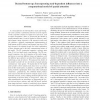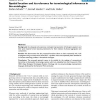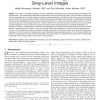1507 search results - page 88 / 302 » Spatial Analysis of BioAmbients |
CVPR
2007
IEEE
15 years 12 months ago
2007
IEEE
A critical function in both machine vision and biological vision systems is attentional selection of scene regions worthy of further analysis by higher-level processes such as obj...
174
click to vote
ICDE
2009
IEEE
15 years 11 months ago
2009
IEEE
Given a set of points P and a query point q, the reverse furthest neighbor (RFN) query fetches the set of points p P such that q is their furthest neighbor among all points in P {...
BMCBI
2007
14 years 10 months ago
2007
Background: An adequate and expressive ontological representation of biological organisms and their parts requires formal reasoning mechanisms for their relations of physical aggr...
PAMI
2008
14 years 9 months ago
2008
In this paper, we develop a spatially-variant (SV) mathematical morphology theory for gray-level signals and images in the euclidean space. The proposed theory preserves the geomet...
BMCBI
2004
14 years 9 months ago
2004
Background: Hidden Markov Models (HMMs) have proven very useful in computational biology for such applications as sequence pattern matching, gene-finding, and structure prediction...



